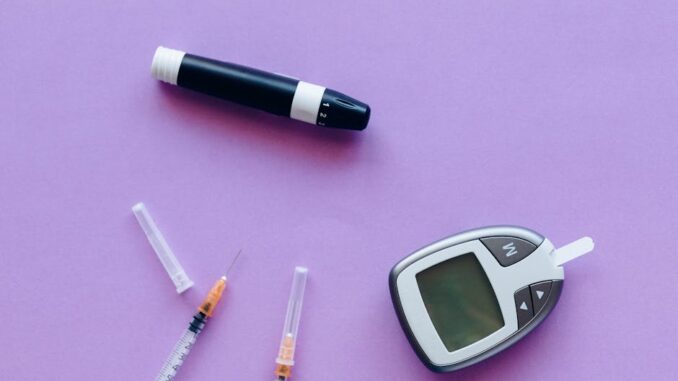
Type 1 diabetes (T1D) is a chronic condition where the immune system erroneously targets and destroys insulin-producing beta cells in the pancreas. This destruction leads to elevated blood sugar levels, necessitating lifelong insulin therapy and vigilant monitoring. Recent research has introduced several promising strategies aimed at safeguarding these vital cells from immune-mediated damage.
Monoclonal Antibodies: Targeting the Attackers
Monoclonal antibodies (mAbs) have emerged as a focal point in T1D research. These lab-engineered molecules can specifically bind to immune cells responsible for beta cell destruction, thereby preventing or even reversing the damage.
A notable example is mAb43, an experimental mAb developed by researchers at Johns Hopkins Medicine. In preclinical studies involving mice, mAb43 effectively shielded beta cells from immune attacks, leading to prolonged insulin production. The antibody’s specificity for beta cells suggests potential for long-term human use with minimal side effects. As Dr. Kasinathan, a lead researcher, noted, “mAb43 in combination with insulin therapy may have the potential to gradually reduce insulin use while beta cells regenerate.” (hopkinsmedicine.org)
Secure patient data with ease. See how TrueNAS offers self-healing data protection.
Immune-Modulating Drugs: Reprogramming the Response
Beyond mAbs, certain immune-modulating drugs are showing promise in altering the immune system’s response to beta cells.
For instance, JAK inhibitors, commonly used to treat autoimmune conditions like psoriasis and arthritis, have been investigated for their potential in T1D management. A study co-led by Indiana University School of Medicine researchers demonstrated that inhibiting the tyrosine kinase 2 (TYK2) protein—a key player in inflammation—reduced harmful inflammation in the pancreas. This approach not only protected beta cells but also diminished the immune system’s attack on these cells. Dr. Carmella Evans-Molina, a co-author of the study, emphasized the significance, stating, “This finding is exciting because there is already a drug on the market that does this for psoriasis, which could help us move more quickly toward testing it for Type 1 diabetes.” (medicine.iu.edu)
Immune Shielding: Creating Safe Havens for Beta Cells
Another innovative strategy involves creating “immune-evading” beta cells that can function without being targeted by the immune system.
Researchers at the Salk Institute for Biological Studies have developed human islet-like organoids that express insulin and are resistant to autoimmune attacks. These organoids could potentially be transplanted into patients without the need for immunosuppressive drugs, addressing a significant challenge in current T1D treatments. The Salk Institute’s press release highlighted the potential impact, stating, “We hope that regenerative medicine in combination with immune shielding can make a real difference in the field by replacing damaged cells with lab-generated human islet-like cell clusters that produce normal amounts of insulin on demand.” (salk.edu)
Tolerogenic Therapies: Teaching the Immune System Tolerance
Tolerogenic therapies aim to induce the immune system to tolerate beta cells, preventing them from being recognized as foreign.
One approach involves using dendritic cells—immune cells that present antigens to T cells—to promote tolerance. By modifying these dendritic cells to present beta cell antigens in a non-threatening manner, researchers hope to prevent the immune system from attacking beta cells. While still experimental, this strategy offers a novel avenue for T1D treatment. As noted in a review article, “Tolerogenic therapies employ the inbuilt tolerance mechanisms of a class of immune cells called dendritic cells.” (en.wikipedia.org)
Challenges and Future Directions
Despite these promising developments, several challenges remain. The complexity of the immune system means that therapies effective in animal models may not always translate to humans. Additionally, the risk of unintended immune suppression poses potential safety concerns.
Ongoing clinical trials and research are crucial to determine the safety and efficacy of these therapies in humans. Personalized medicine approaches, considering individual genetic and environmental factors, may enhance treatment outcomes. As Dr. Evans-Molina aptly put it, “This finding is exciting because there is already a drug on the market that does this for psoriasis, which could help us move more quickly toward testing it for Type 1 diabetes.” (medicine.iu.edu)
In conclusion, the landscape of T1D treatment is evolving rapidly. With advancements in monoclonal antibodies, immune-modulating drugs, immune shielding, and tolerogenic therapies, there is renewed hope for more effective treatments and, potentially, a cure for Type 1 diabetes.


The research on immune-modulating drugs, particularly the repurposing of existing medications like JAK inhibitors, offers an expedited path for clinical trials. Exploring combination therapies that leverage multiple mechanisms, such as immune shielding with tolerogenic approaches, could provide a synergistic effect and improved outcomes.
Great point! The potential for synergistic effects with combination therapies is really exciting. Immune shielding combined with tolerogenic approaches could offer a more comprehensive strategy for protecting beta cells. It will be interesting to see how clinical trials explore these combinations. Thanks for highlighting this important aspect!
Editor: MedTechNews.Uk
Thank you to our Sponsor Esdebe
The development of immune-evading islet-like organoids represents a significant step. Scaling production for widespread therapeutic use, while maintaining their immune-shielded status, will be a critical area of focus for future research.
Thanks for your comment! Absolutely agree that scaling production of immune-evading islet-like organoids is key. Exploring innovative bioreactor designs and automation techniques will be crucial to achieve the volume needed for clinical application, while preserving functionality. These are exciting challenges!
Editor: MedTechNews.Uk
Thank you to our Sponsor Esdebe
The exploration of tolerogenic therapies and their mechanisms involving dendritic cells is particularly compelling. Understanding how to harness these cells to promote beta cell tolerance could revolutionize T1D treatment, offering a more sustainable solution than continuous immune suppression.